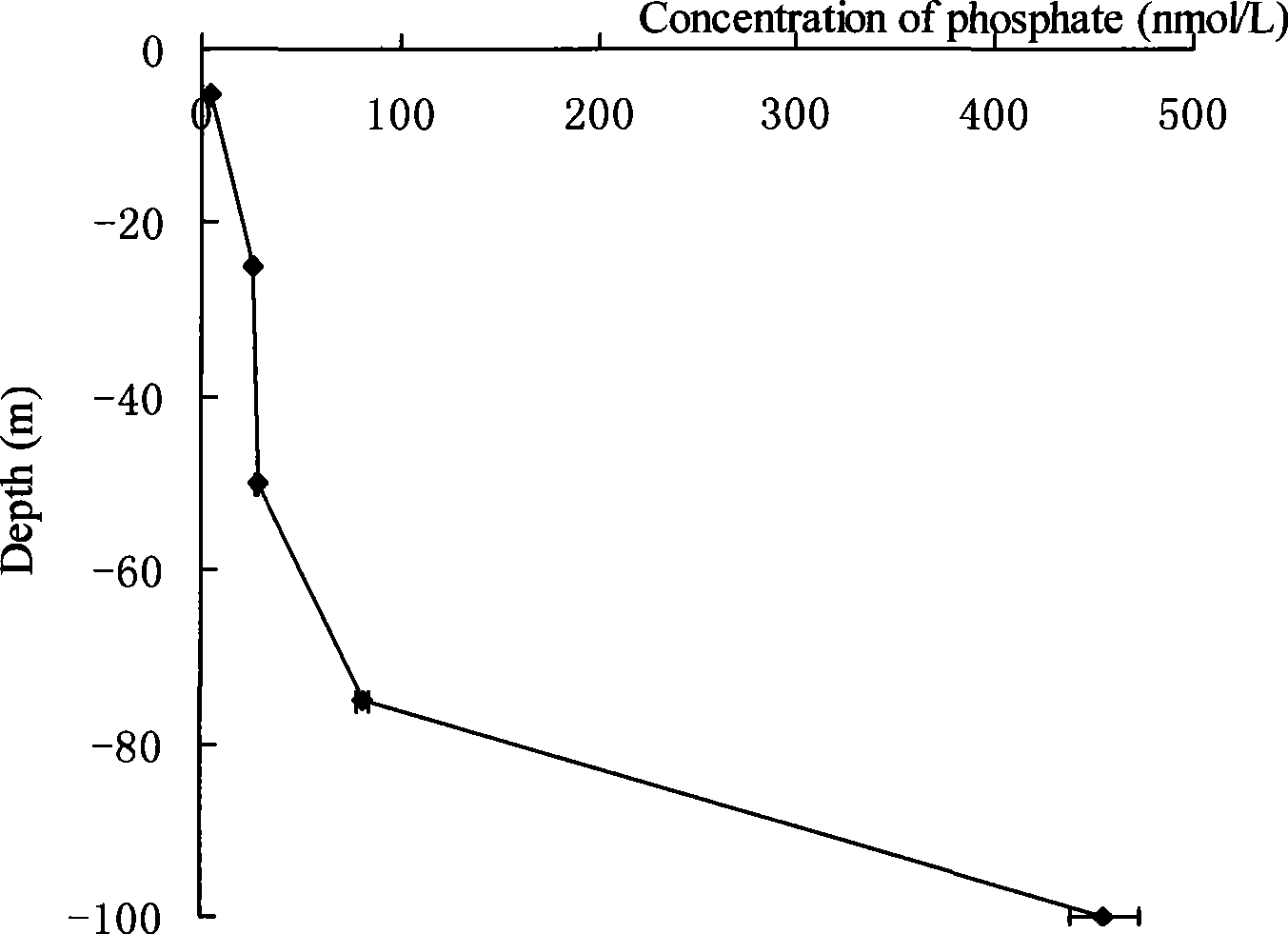Method for measuring nanomolar reactive phosphate in sea water
A phosphate and seawater technology, applied in the direction of measuring devices, color/spectral characteristic measurement, instruments, etc., can solve the problems of time-consuming and labor-intensive, large sample volume, etc., and achieve the effect of cheap price, low detection cost, and easy automation
- Summary
- Abstract
- Description
- Claims
- Application Information
AI Technical Summary
Problems solved by technology
Method used
Image
Examples
Embodiment 1
[0014] Standard curve drawing: Take 150mL series standard solutions containing phosphorus respectively 0, 3.4, 10.3, 20.6, 30.9, 61.9, 123.7nmol / L, and mix them with 2.1mL ammonium molybdate mixed solution (the preparation method is the same as the marine monitoring specification) and 2.1 Ascorbic acid solution with a mL concentration of 100g / L was mixed and reacted at room temperature for 2min. The reacted solution was passed through the HLB column at a speed of 21.0mL / min by a peristaltic pump for extraction and enrichment. The enrichment volume was 105mL; Wash the HLB column with 4mL concentration of 0.15mol / L sodium chloride solution, and then use 3.0mL concentration of 0.15mol / L sodium hydroxide solution to elute the extract at a speed of 5.6mL / min, and use a spectrophotometer at 740nm The detection was carried out, and the absorbance value was recorded by computer software. Make a working curve of phosphate concentration and absorbance: A=0.011+0.00606C P (n=7, R 2 =0....
Embodiment 2
[0019] With the method of the present invention, the water samples collected from the Southeast Asia Time Series Station (SEATS station) in the South China Sea were measured in July 2007. The water samples were shallower than 100m. The water samples were stored frozen in the refrigerator before analysis, and the content of active phosphorus was analyzed immediately after thawing thoroughly, and each sample was measured 1 to 3 times. The result is as figure 1 , which is consistent with results obtained by other oceanographers.
[0020] 1) Mix a certain concentration of phosphate seawater spiked solution with the following reagents at a volume ratio of 50-150:1, ammonium molybdate mixed solution and reducing agent solution, react in a water bath at 30-50°C for 0-20 minutes, and use infusion The device extracts and enriches the reacted solution through the enrichment column at a speed of 7-25mL / min, with an enrichment volume of 0-200mL; sequentially washes and enriches with 0-5m...
PUM
 Login to View More
Login to View More Abstract
Description
Claims
Application Information
 Login to View More
Login to View More - R&D
- Intellectual Property
- Life Sciences
- Materials
- Tech Scout
- Unparalleled Data Quality
- Higher Quality Content
- 60% Fewer Hallucinations
Browse by: Latest US Patents, China's latest patents, Technical Efficacy Thesaurus, Application Domain, Technology Topic, Popular Technical Reports.
© 2025 PatSnap. All rights reserved.Legal|Privacy policy|Modern Slavery Act Transparency Statement|Sitemap|About US| Contact US: help@patsnap.com


